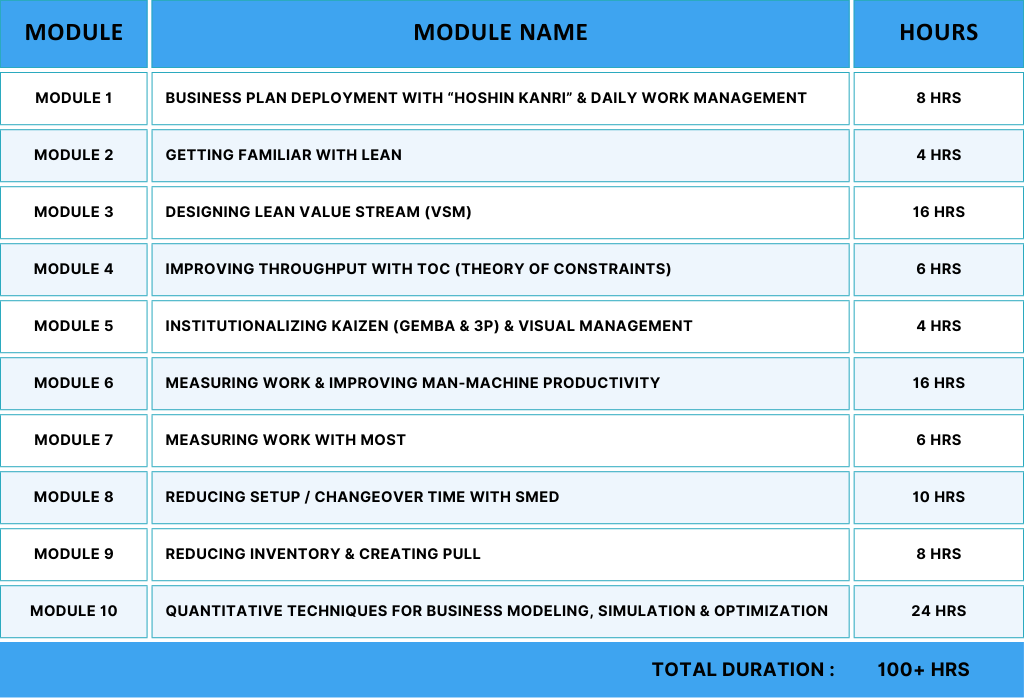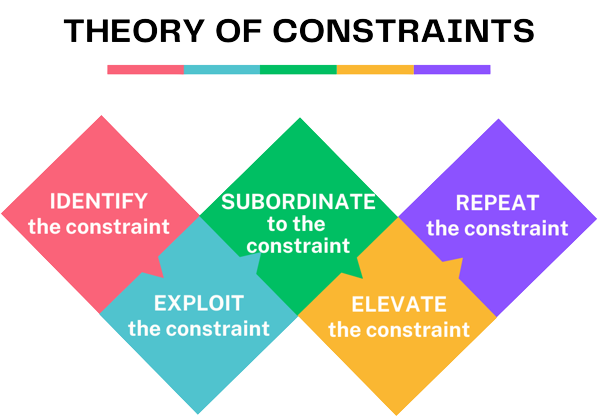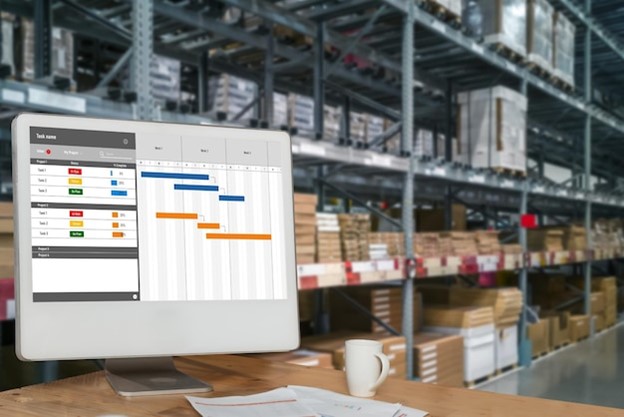- Home
- Capabilities
- Consulting
- Certification Training
- Softwares
- About Us
- Career
- Contact Us
A “Certified Lean Professional” is a professional having advanced knowledge and experience in application of lean principles, practices and methodology for improving efficiency and profitability of the organization.
It’s not just about getting certified. It’s about developing competency and confidence to apply Lean principles, tools and techniques in complex situations and preparing to take up Lean & Operational Excellence initiatives in right direction.


This program is designed for professionals from manufacturing, process, and service industries who are seeking to improve their competency in applying Lean principles, practices and methodology in their organization. The program will suit professional in the area of:




Hoshin Kanri or Hoshin Planning or Policy Deployment, is a strategic management and planning methodology that helps align an organization's strategic goals with its day-to-day operations.
The goal of Hoshin Kanri is to ensure that an organization's resources and efforts are focused on achieving its most critical objectives.
Contents :

Lean is all about doing more with less.
Irrespective of industry, every process consists of some value adding and a lot of non-value adding work or MUDA (waste).
Identifying and eliminating MUDA helps to do more with less (resources) and improving efficiency and profitability.
Contents :

VSM provides a visual representation of the process from raw materials to the customer, including all activities and wait times.
This helps organizations make informed decisions on process improvements leading to improved flow, reduced lead times, better efficiency, reduced costs, and higher customer satisfaction.
Contents :

Stating that a system's overall performance is limited by its weakest link, which is referred to as the “constraint”, the Theory of Constraints (TOC) is a management philosophy that focuses on identifying and removing constraints in a system to maximize throughput & efficiency.
Contents :

Kaizen is a philosophy that emphasizes small, incremental changes to processes, products, and services, with the goal of maximizing efficiency and effectiveness. Kaizen encourages all employees to actively participate in the improvement process and to continuously seek ways to enhance performance.
Visual Management is a technique that uses visual aids to communicate information about health of processes which can be easily understood by employees, thereby enabling them to make informed decisions to improve processes.
Contents :

Productivity is a measure of efficiency, often calculated as the ratio of output to inputs, such as labor and capital.
While investments in technological advancements can help in achieving higher productivity, a scientific approach to measuring the work, standardizing practices and managing the man-machine deployment can be most cost effective way to improve productivity.
Contents :

Maynard's Operation Sequence Technique (MOST) is a method used to analyze and improve processes by breaking them down into smaller, standardized tasks and assigning a pre-determined standard time for doing the same.
It reduces variability and increases reliability of time & motion studies.
Contents :

SMED (Single Digit Minute Exchange of Dies) is a technique for reducing the time it takes to changeover from producing one product to another from hours or even days to less than 10 minutes and thereby improving productivity.
This can be achieved by redesigning hardwares; separating internal & external activities; and simplifying, streamlining & standardizing procedures.
Contents :

Inventory management is the process of overseeing and controlling the ordering, storage, and use of materials, goods, and products within an organization to ensure that it has adequate stock levels and meets customer demand while minimizing cost and waste.
This involves identifying and tracking inventory levels, determining reorder points, and setting policies for stock management, such as safety stock levels and stock turnover.
Contents :

Business process modeling is a mathematical representations of an organization's processes with factors affecting and getting affected by decisions that we take in a complex scenarios.
This can be used to make data-driven decisions to optimize the processes and improve the overall performance of the organization.
Contents :
